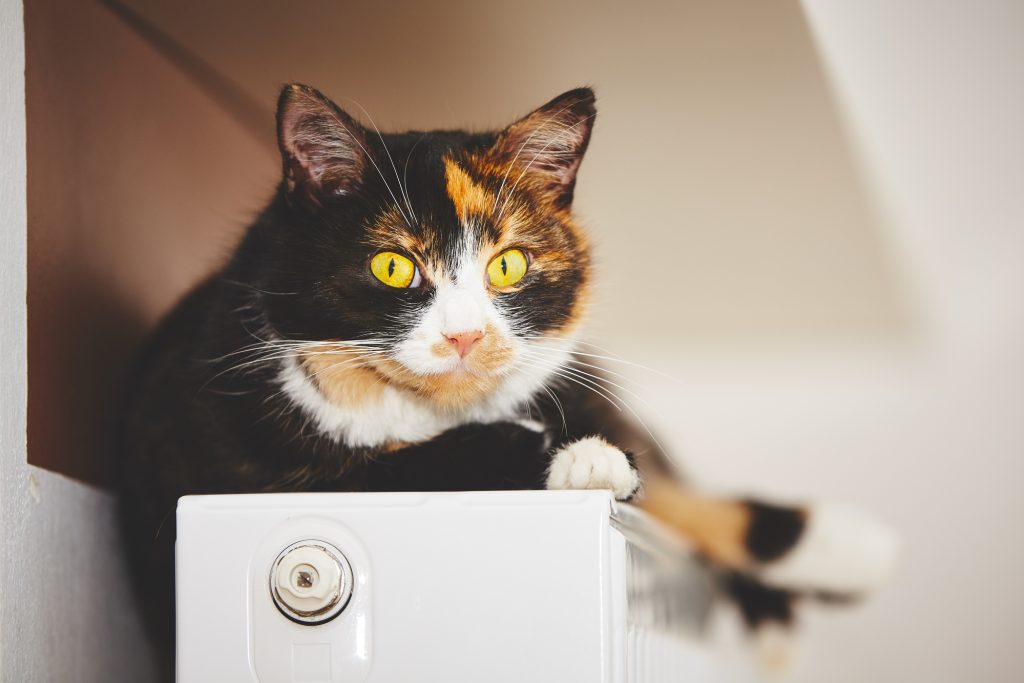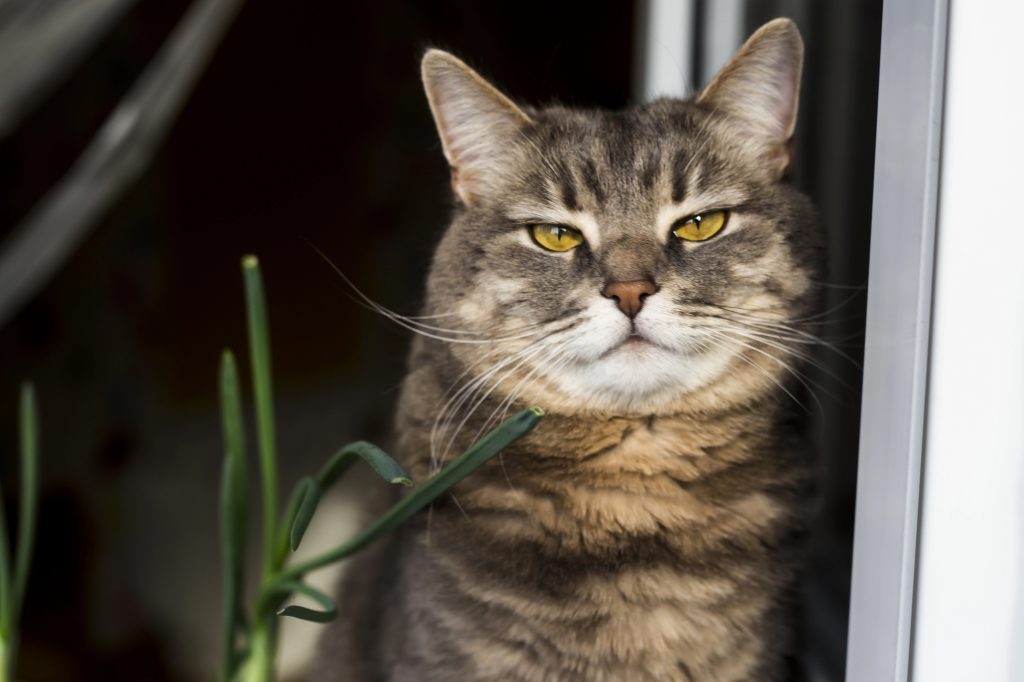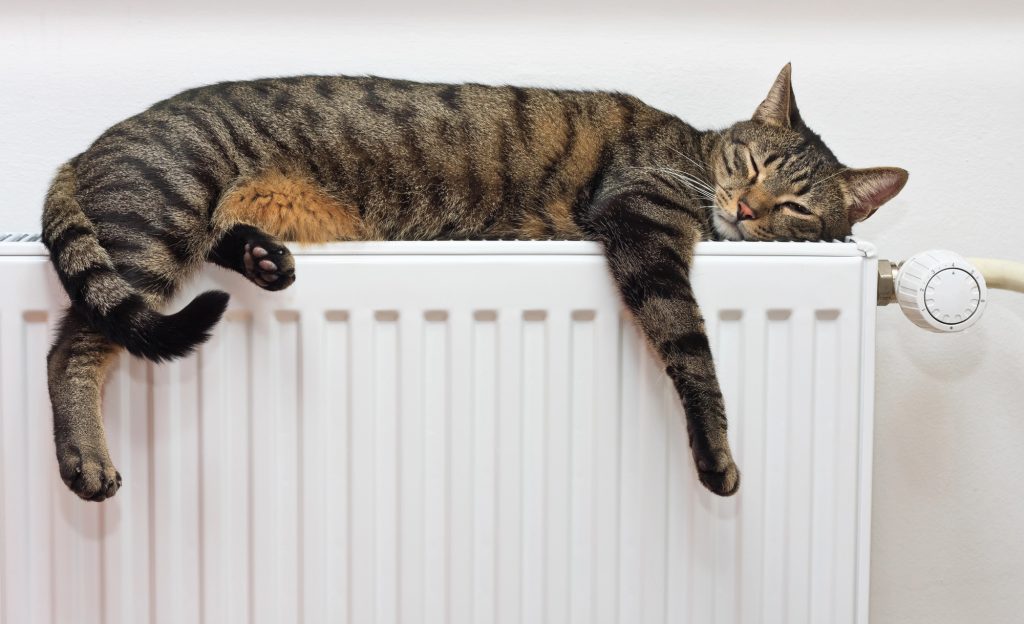Table of Contents
When your feline friend enters her heat cycle, it can be a challenging time for both of you. Understanding and managing her behavior is key to keeping her comfortable. While spaying your cat is a permanent solution to prevent the heat cycle, there are effective strategies you can use to soothe her in the interim. From creating a serene environment to providing extra attention, these methods can help mitigate the stress of this natural process and prevent an accidental litter of kittens.
It’s important to recognize the signs of a cat in heat, which include increased vocalization, restlessness, and excessive grooming. These behaviors are her biological responses to attract male cats and can result in urine spraying around your home. By addressing these symptoms with patience and care, you can help calm your cat and maintain a tranquil household atmosphere until the heat cycle ends.

Understanding Your Cat’s Heat Cycle
Comprehending the heat cycle in cats is fundamental to managing your pet’s needs during this time. An unspayed cat can go through several cycles a year, which is why spaying your cat is often recommended to avoid the behaviors associated with heat and the risk of an accidental litter of kittens.
Identifying the Signs of a Cat in Heat
Recognizing when your cat is in heat is essential for providing the right care. Look for signs such as excessive grooming, restlessness, and a tendency to urine spraying as a form of scent marking. She may become more vocal and rub against furniture or people to attract male cats. These behaviors can escalate quickly, so it’s crucial to take steps to calm her promptly.
The Frequency of Feline Heat Cycles
Female cats experience heat cycles multiple times a year, especially during the warmer months. The frequency of these cycles can vary but usually happens every few weeks unless the cat becomes pregnant. Understanding this pattern can help you anticipate and manage your cat’s behavior when she’s in heat.
Duration of Heat in Cats
Each heat cycle can last from several days to a week or more, with the entire mating season potentially stretching across half the year. During this time, a female cat can go into heat repeatedly until she mates or the mating season ends.
Behavioral Changes During Heat
During her heat cycle, a cat will exhibit several behavioral changes. These can include excessive grooming, increased affection or aggression, and urine spraying to attract mates. Spaying your cat is the most effective way to prevent these behaviors and avoid an accidental litter of kittens.
Vocalization and Restlessness
Cats in heat often become more vocal, emitting loud and persistent cries. This increased vocalization serves to attract potential mates. Along with this, your cat may show signs of restlessness, pacing around the house, and displaying an inability to settle down comfortably.
Affectionate or Aggressive? Recognizing Mood Swings
During the heat cycle, your cat might alternate between seeking extra affection and exhibiting irritability or aggression. These mood swings are natural reactions to the hormonal changes occurring within her body. Being patient and responsive to her needs can help ease her through these fluctuations.

Tips to Calm a Cat in Heat
Calming a cat in heat involves a combination of tactics such as maintaining a clean litter box, providing mental stimulation, and consulting your veterinarian if you do not intend to breed. These strategies can prevent unwanted pregnancy and keep your feline friend content until her heat cycle ends.
• Provide a Calm Environment
To soothe your cat during her heat cycle, it’s crucial to minimize loud noises and create a peaceful atmosphere. A calm environment helps to reduce her stress levels and can prevent her from becoming overly agitated during this sensitive time.
• Minimize Stimulation
Limiting exposure to loud noises and reducing overall sensory stimulation can help keep your cat relaxed. By creating a quiet and secure space, you can help mitigate the effects of her heat cycle’s heightened sensitivity and anxiety.
• Use Catnip
For some cats, catnip can have a soothing effect when they are in heat. A bit of this herb may help to distract and relax your cat, potentially reducing the intensity of her heat-related behaviors.
• Use Synthetic Pheromone Plug-Ins or Sprays
Synthetic pheromone products can create a comforting environment for your cat. These products mimic the natural pheromones that cats produce, which can help alleviate stress and make your cat feel more at ease during her heat cycle.
• Play with Your Cat
Engaging your cat in play with interactive toys can help burn off excess energy and distract her from the stress of being in heat. Regular playtime can be a valuable tool in keeping her calm and content.
• Provide Extra Pets and Attention
During this challenging time, your cat may seek more attention than usual. Responding with extra pets and cuddles can reassure her and provide the comfort she needs. Your loving presence can be a powerful way to help her feel secure and loved, easing the discomfort of her heat cycle.
• Offer a Warm Towel or Blanket
As pet parents, we always want to comfort our feline friends when they seem distressed. During a heat cycle, a cat may find solace in the warmth and security of a warm towel or blanket. This can mimic the comfort they might seek from a mate and provide a soothing environment where they can relax. Simply warming a towel in the dryer for a few minutes and then placing it in your cat’s favorite resting spot can make a significant difference in her comfort level.
• Use a Heating Pad
Another effective method for soothing a cat in heat is to offer a gentle source of heat, such as a heating pad. Set the heating pad to a low temperature to ensure it’s warm but not hot, and place it under a blanket in your cat’s bed. This not only provides a cozy retreat but can also help to reduce the intensity of some behaviors associated with being in heat, such as restlessness. Always supervise your cat when using a heating pad to prevent any potential overheating or burns.
• Keep Her Away From Male Cats
During her heat cycle, it’s crucial to prevent any unintended pregnancies by keeping your female cat away from male cats. Securing doors and windows and supervising outdoor time are essential steps in avoiding an accidental mating. This separation not only prevents unwanted litters but also reduces the stress and frustration that can come from your cat’s instinctual drive to mate.
• Go to the Vet
If your cat’s heat-related behaviors become too disruptive or if you’re considering a long-term solution, a trip to the vet for a consultation may be in order. Your veterinarian can provide advice on the best course of action, which may include the option to spay your cat. Spaying not only prevents heat cycles but also eliminates the risk of certain health issues and contributes to a calmer, happier pet.
When to Consult Your Veterinarian
While most behaviors during a cat’s heat cycle are normal, it’s important to know when to seek professional help. If your cat seems to be in excessive discomfort, displays significant changes in eating or bathroom habits, or if you notice any health concerns, it’s time to consult your veterinarian. They can rule out any underlying medical conditions and guide managing your cat’s heat cycle.
Additionally, if you’re considering ending the heat cycles permanently, your veterinarian can discuss the benefits and procedure of spaying your cat. This can be an important conversation for pet owners looking to avoid future stress for both themselves and their feline companions.

Frequently Asked Questions
1. Does cat heat go away on its own?
Yes, a cat’s heat will typically resolve on its own after several days. However, without spaying your cat, she will continue to experience heat cycles, which can occur every few weeks, especially during the breeding season. This can lead to repeated stress for both the cat and the owner, as well as the risk of an accidental litter of kittens if she escapes and finds a male.
2. Do cats in heat sleep more?
During heat cycles, cats may exhibit altered sleeping patterns. Some cats in heat could appear more restless and vocal, reducing their overall sleep time. Conversely, others might sleep more due to the exhaustion from their frequent calling and restlessness. The amount of sleep may vary from cat to cat and can also be influenced by the time of year, as mating season can affect their natural behaviors.
3. Why do cats scream when in heat?
Cats scream when in heat as a part of their natural mating behavior. During a cat’s heat cycle, she becomes receptive to mating, and vocalizations are a way to attract male cats. This behavior is more pronounced during the breeding season, which in the northern hemisphere often coincides with spring and summer when cats reach sexual maturity.
4. Is my cat in pain when she is in heat?
While a cat in heat is not necessarily in pain, she may exhibit discomfort through behaviors like increased vocalization and restlessness. As a cat owner, you can help by ensuring your pet can retreat to a quiet space, keeping the litter box as clean as possible, and providing a warm blanket where she can rest. If you’re concerned about your cat’s behaviors or suspect she’s in discomfort, it’s always wise to consult a veterinarian for advice, as they’re well-versed in veterinary medicine and can offer specific guidance for your pet’s reproductive system. To prevent the stress of heat cycles, consider having your cat spayed, as it can alleviate the signs of a cat in heat and prevent future occurrences in female cats in heat. Remember, the signs and symptoms of a cat in heat can be challenging, but with proper care and advice from veterinary medicine and surgery, you can help your feline friend through this time.
A Calming Conclusion
Ensuring the wellness of a cat in heat is all about patience, understanding, and a touch of creativity. We’ve explored numerous ways to soothe and comfort your feline during this naturally occurring cycle. From setting up a serene environment to engaging in playful activities, each strategy contributes to reducing stress and keeping your kitty content. Remember, it’s not just about managing behavior but also about nurturing the bond you share with your pet.
While a cat’s heat cycle can be a challenging time, it’s an opportunity to provide extra care and attention that reinforces your loving relationship. By utilizing the tips provided, you can help your cat navigate her heat cycle with ease, ensuring her happiness and health. As always, if your cat’s symptoms are extreme or if you have concerns about her well-being, a veterinarian’s expertise is invaluable. Ultimately, your attentive care will lead to a calm and peaceful home for both you and your feline friend.

Hi, I’m Zoey, a devoted mom to two charming Siamese cats. My passion lies in assisting fellow pet owners in providing optimal care for their cats. On CatsEuphoria, I share practical tips and relatable stories, inviting you to join me in appreciating the authentic bond between humans and our beloved feline companions.




